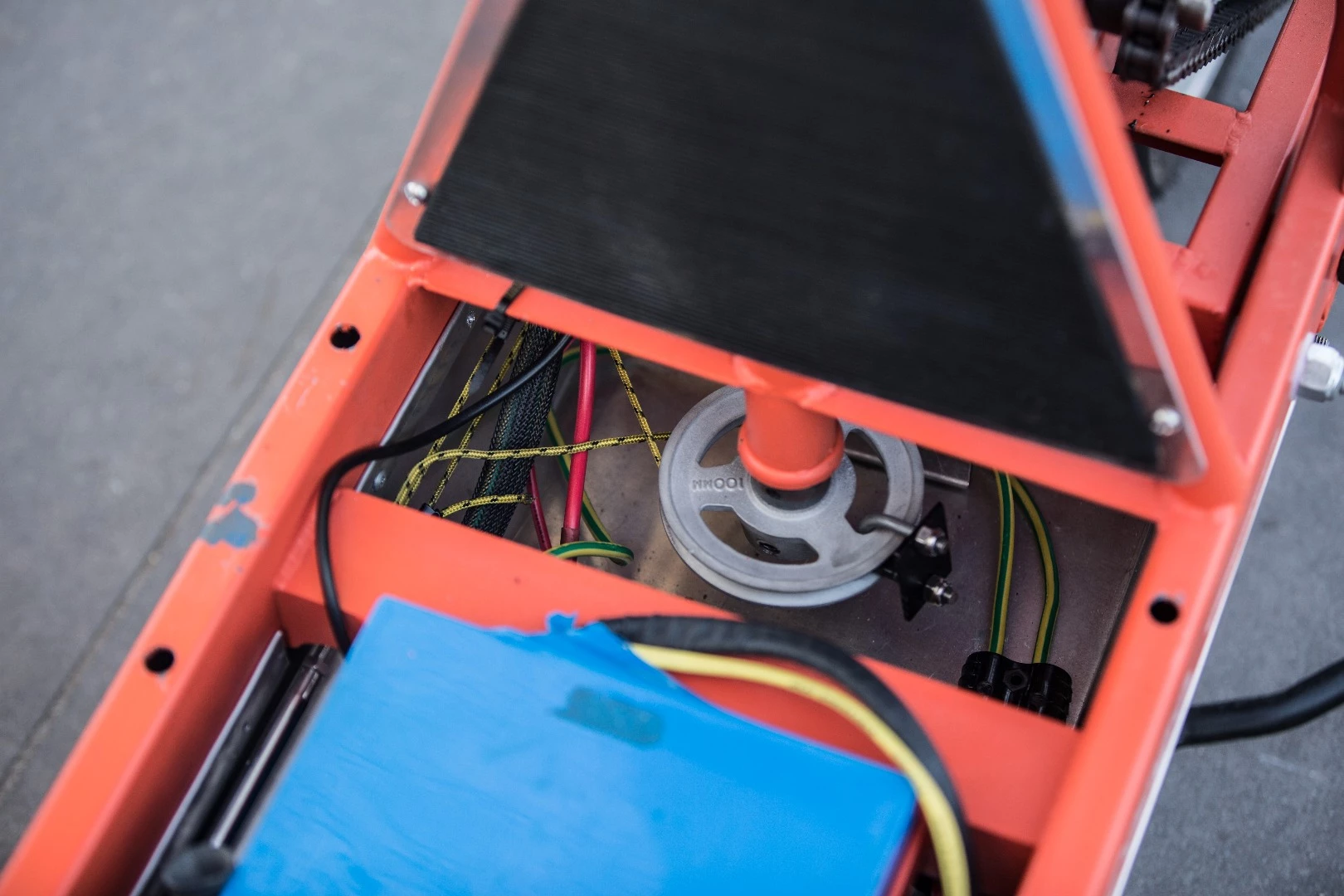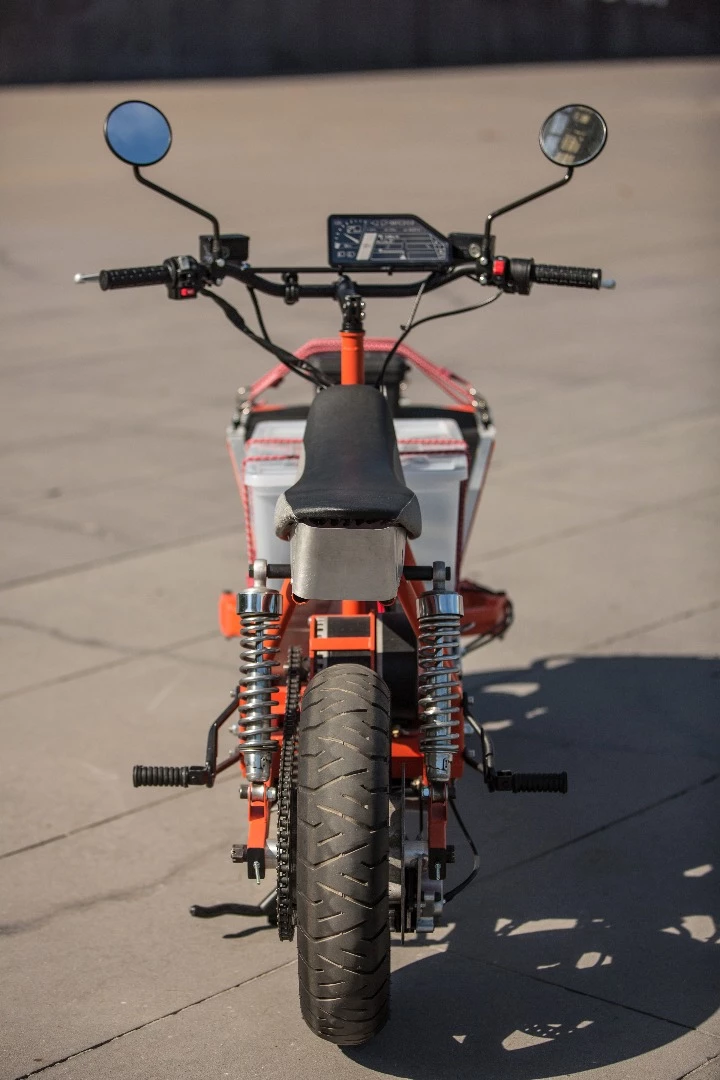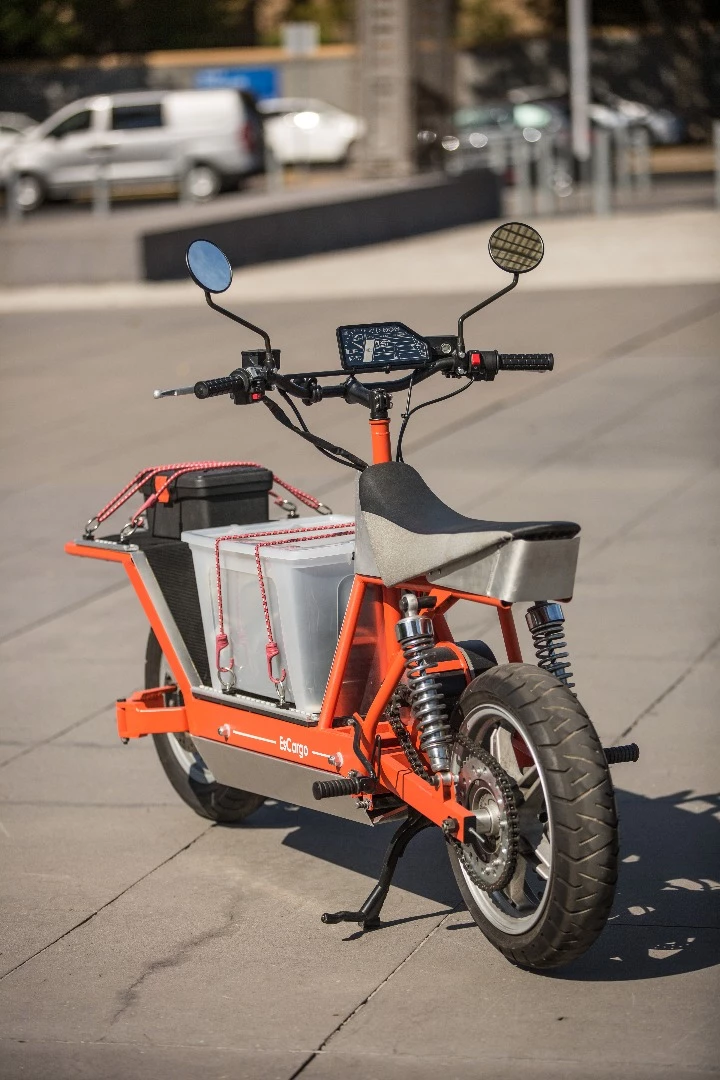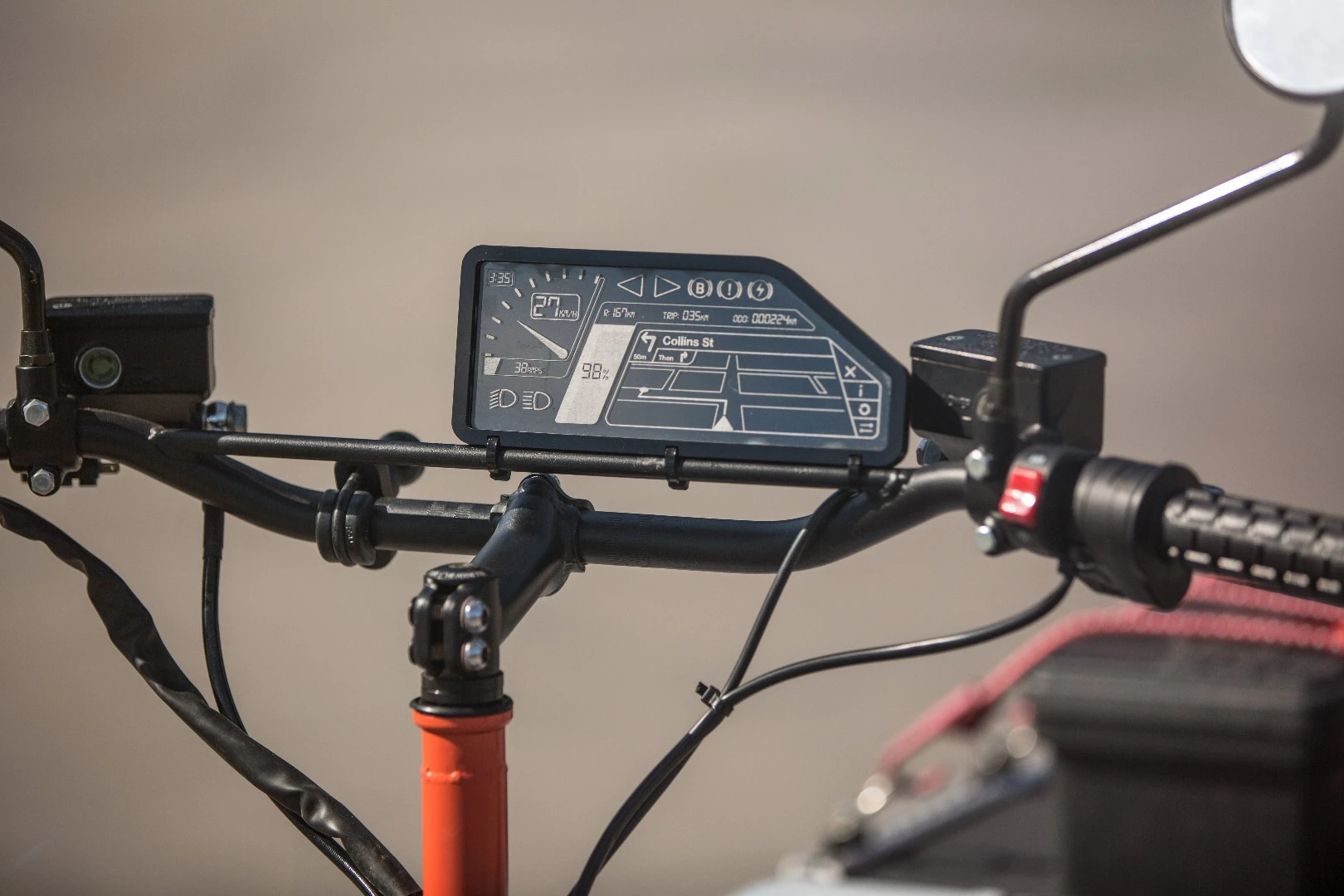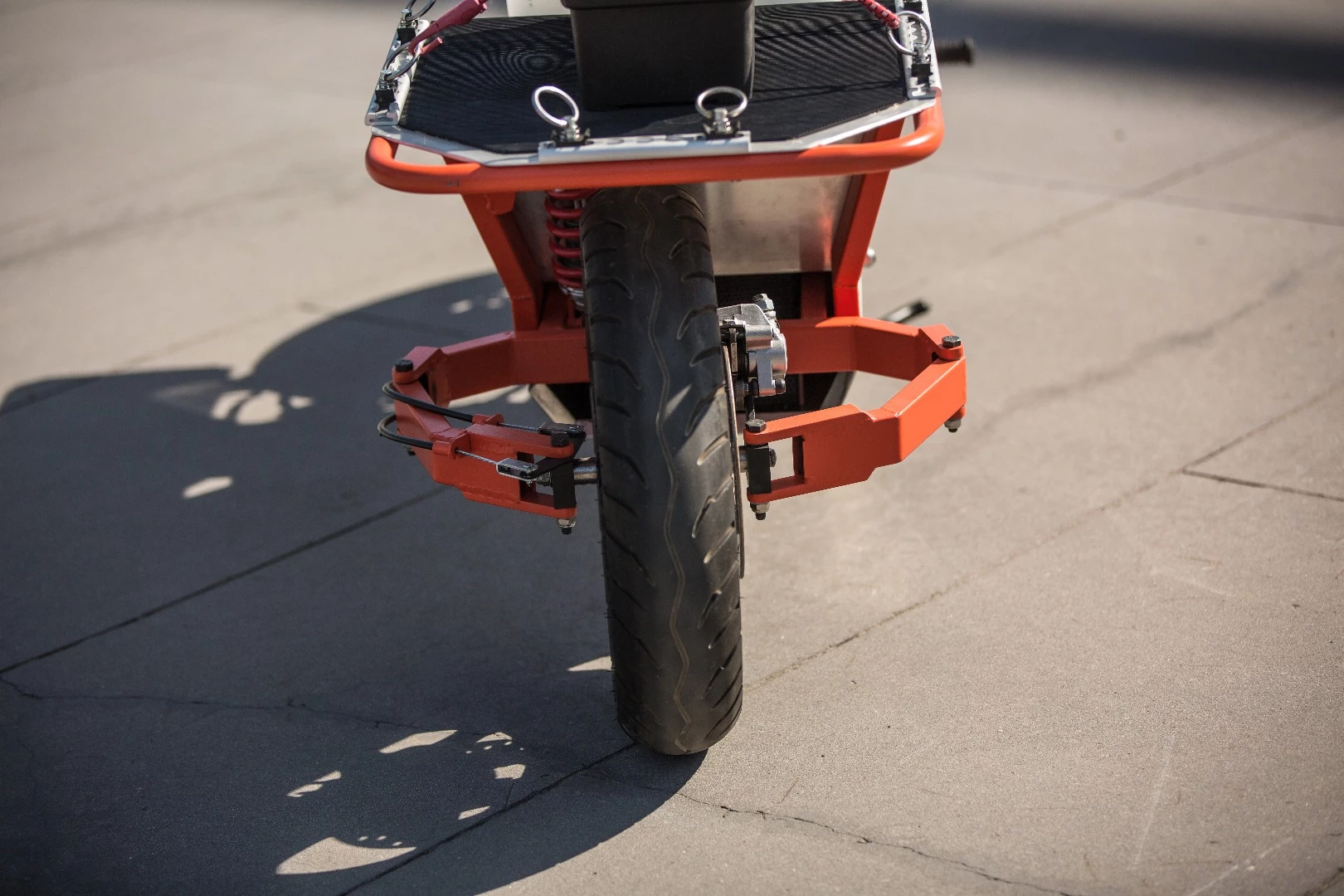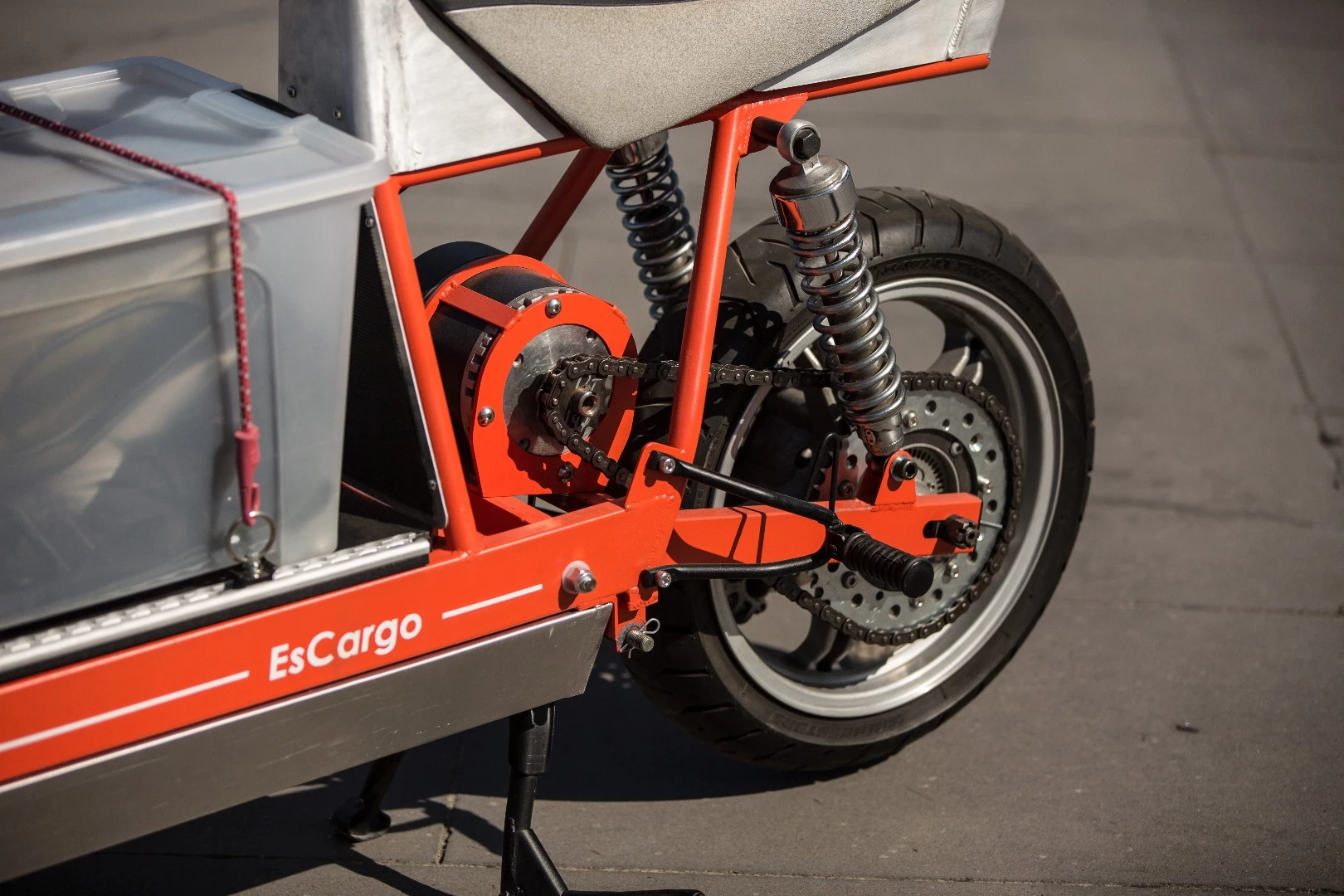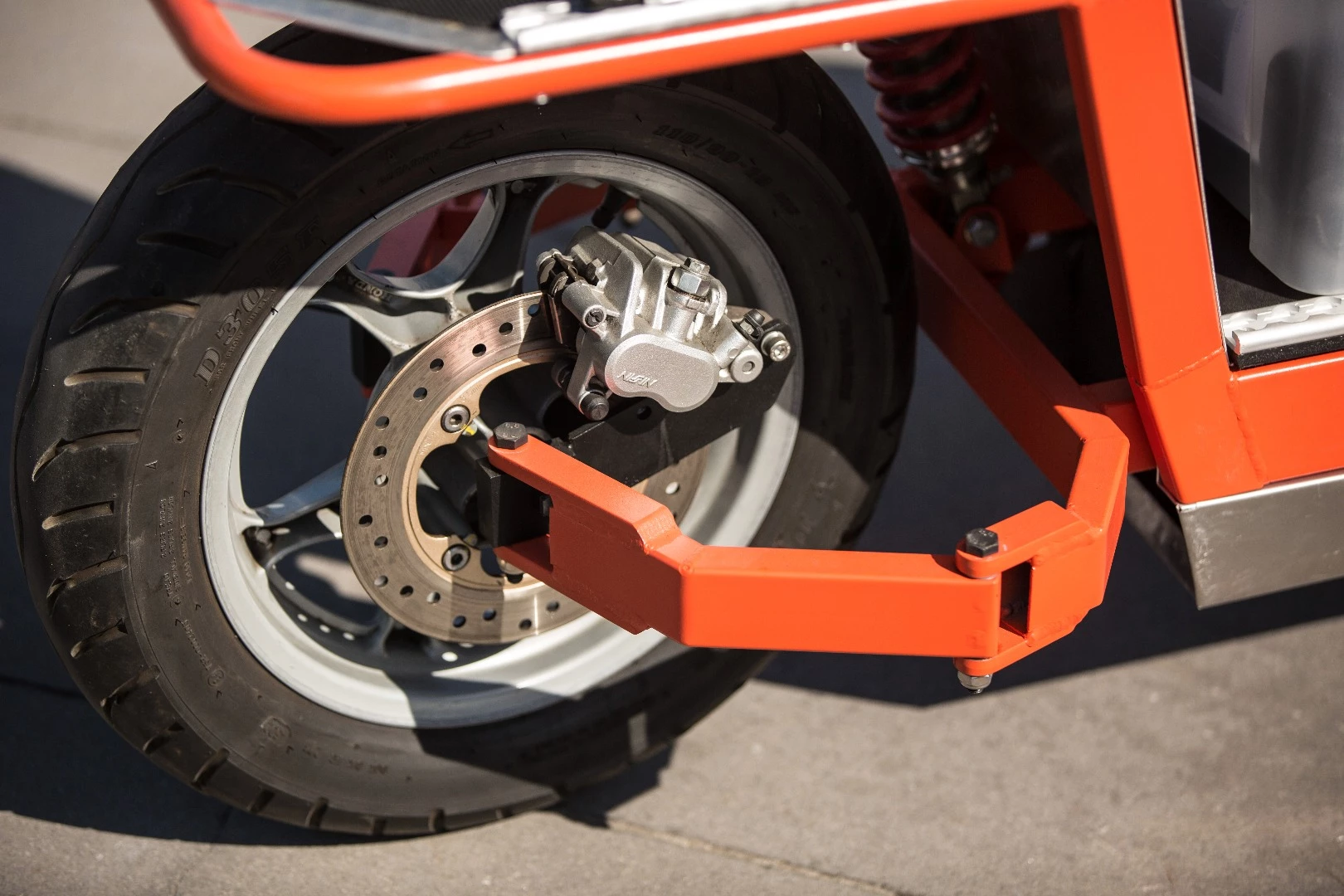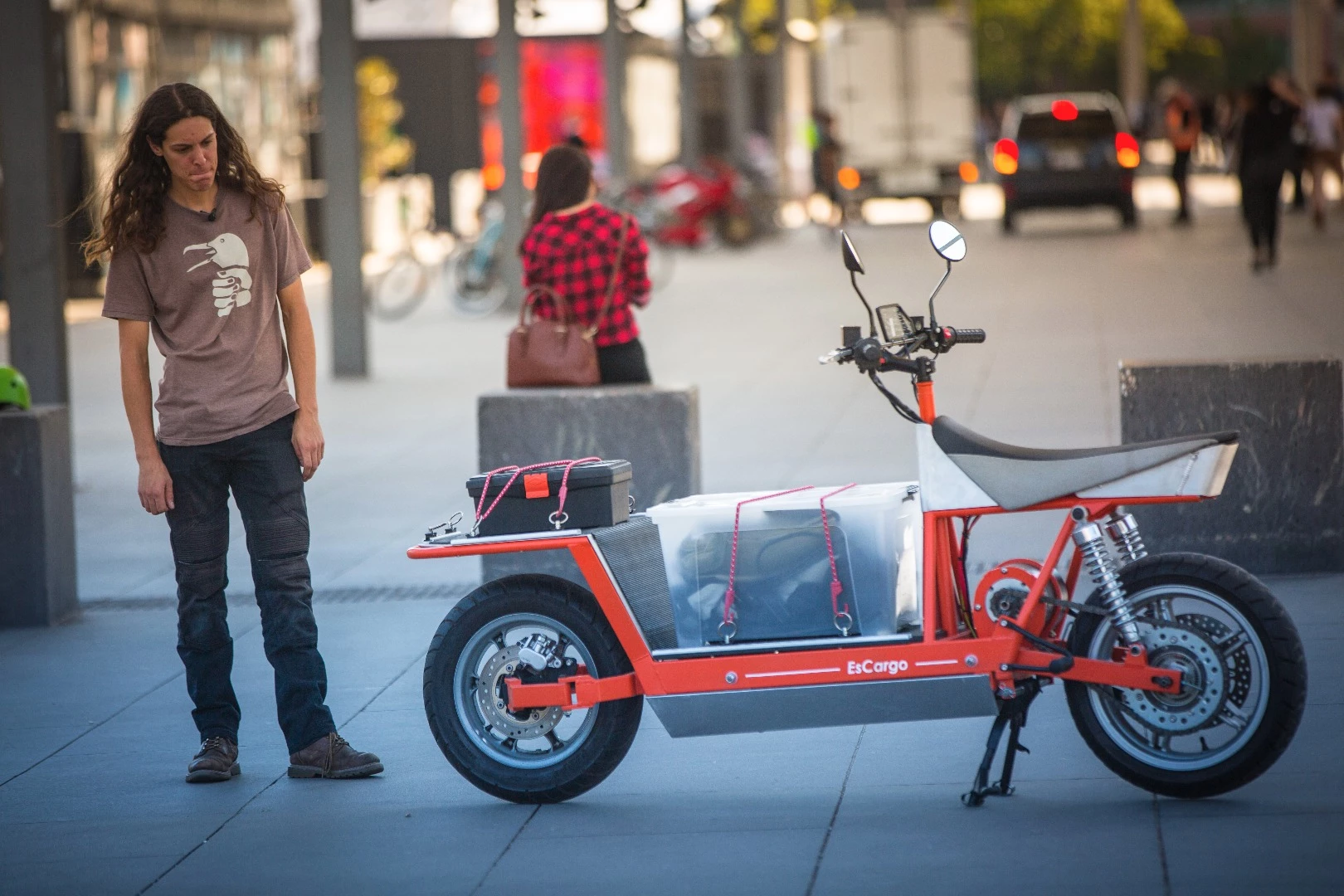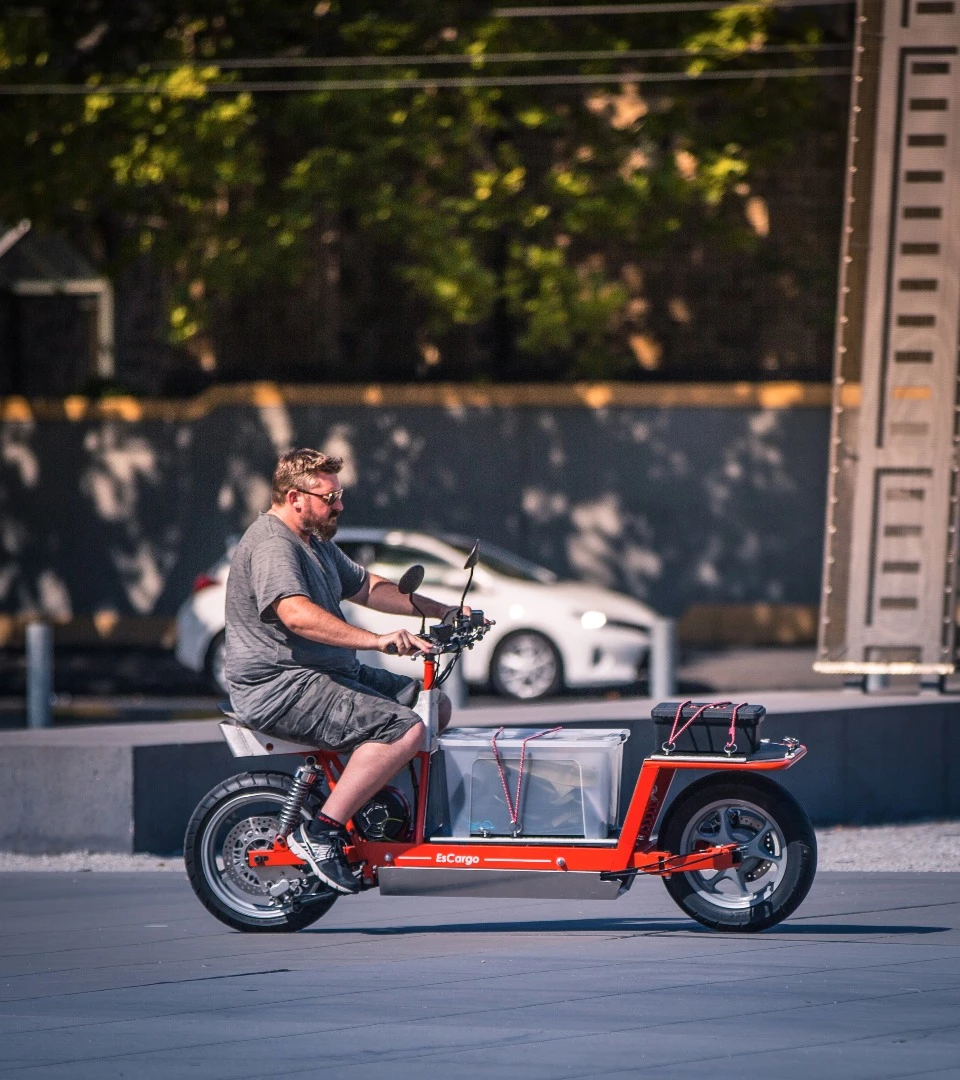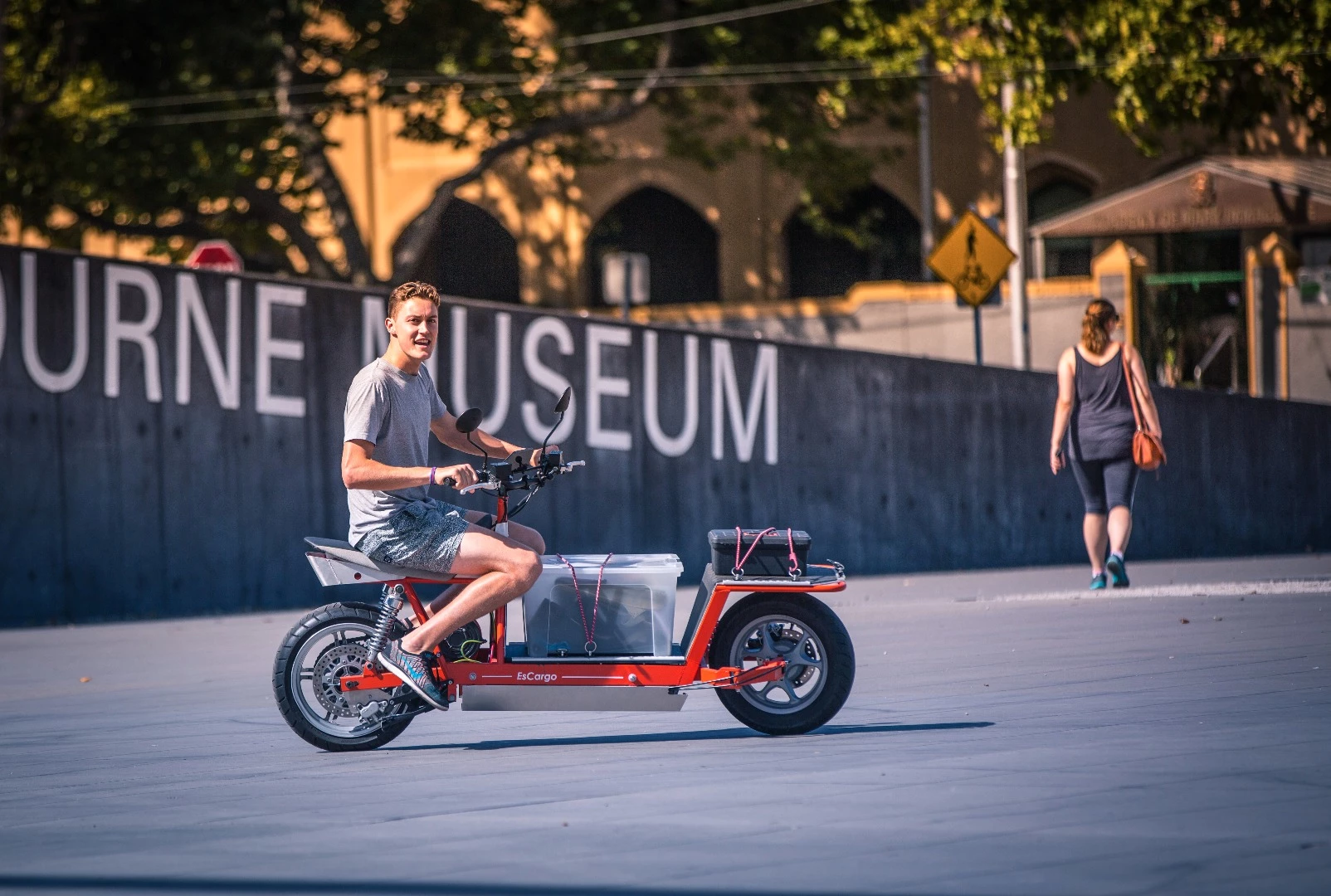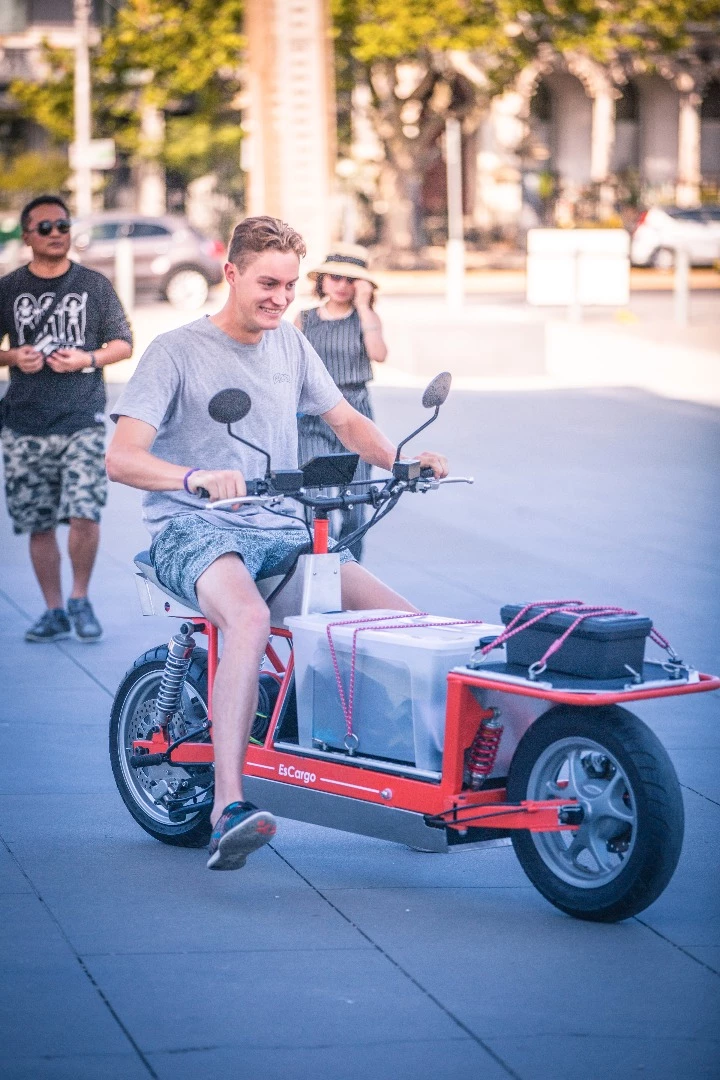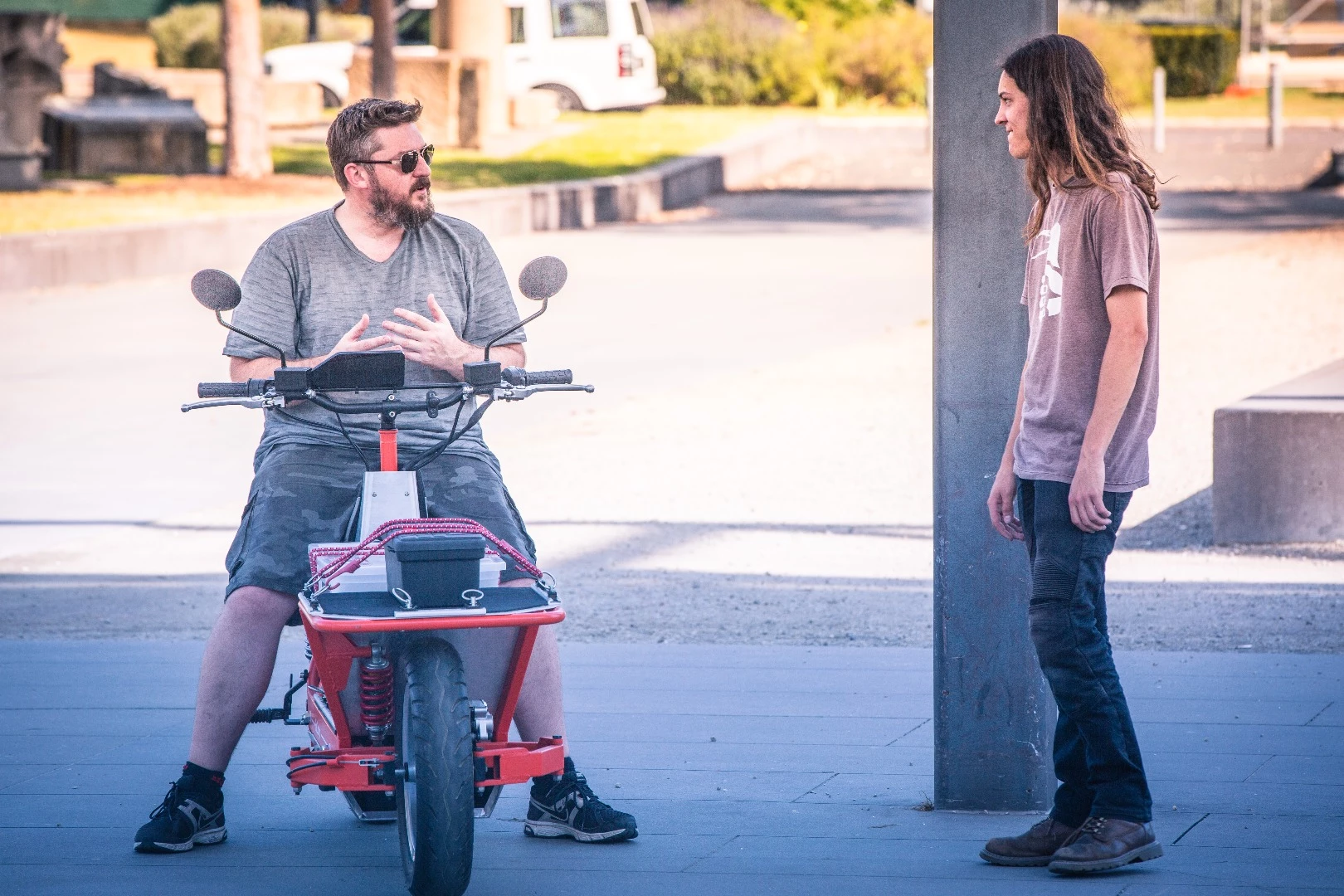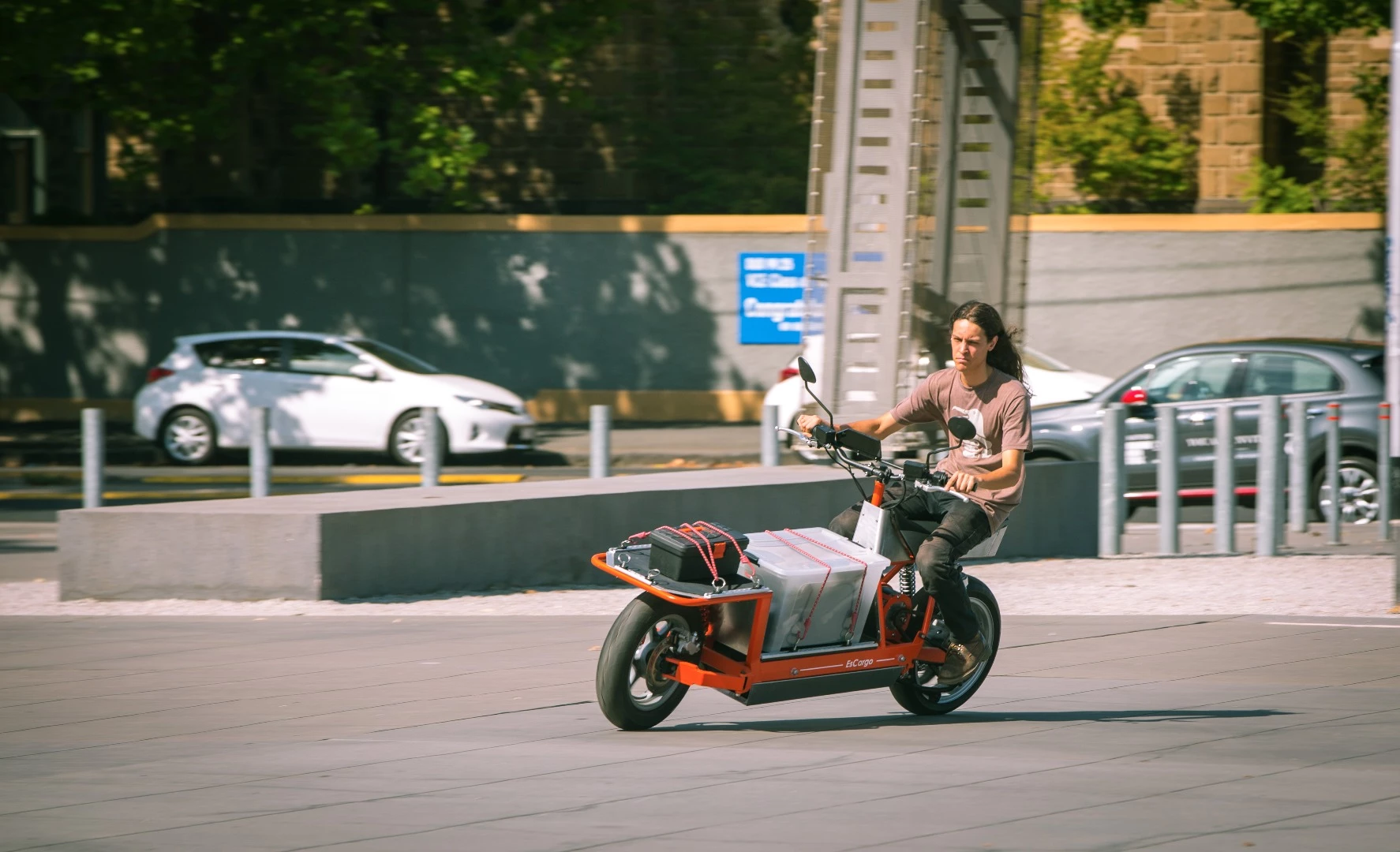I've tested some strange and wonderful vehicles over the last year or two, but this has to be one of the weirdest experiences I've had in a long time. It turns everything I know about handling a motorcycle on its head. The EsCargo is a cargo-carrying electric delivery bike prototype with a unique double-knuckle front suspension and steering system the puts the front wheel more than a meter (3.3 ft) in front of you, giving it some very odd steering dynamics and thoroughly confusing my motorcycling brain. We caught up with inventor Oscar Fehlberg in Melbourne, Australia.
With more people in cities buying more things online there's going to be an increasing demand for quick, efficient delivery systems in the next 20 years. And while there are numerous efforts underway to bring flying drones into the delivery mix, courier style delivery is clearly here to stay in the medium term. All the better if they use zero-emission electric vehicles.
That's the thinking behind the EsCargo, the honours project of Melbourne industrial design graduate Oscar Fehlberg. Inspired by Dutch style cargo bikes like the Bullitt, the Cetma and the Urban Arrow, the EsCargo is designed for mid-range trips slightly longer than a bicycle design would be good for, and for loads up to 150 kg (331 lb), or 175 liters (46 US gal) in capacity.

It's driven by an electric motor - on the prototype we rode it's just a 5-kilowatt continuous, 15 kW burst motor, but that was more than enough power to test the concept. And boy, is it a wacky one to ride.
The front wheel is little over a meter (3.3 ft) out in front of the handlebar, for starters, on a very odd suspension system, while the front axle is steered through a set of Dyneema sailing ropes and pulleys, actuating a pull/pull pair of cables. The axle is held between two articulating arms that can move to accommodate an impressive degree of axle tilt.
"[The steering system] doesn't really have a name," Fehlberg told us. "I found a few examples of it in some DIY cargo bicycles. In the workshop we called it double-knuckle steering because of the two pivot points on each arm. It's similar to hub steering in a way, except it doesn't pivot inside the hub, it uses a standard scooter wheel."
Still, a steering system that uses ropes? It turns out, these Dyneema sailing ropes are designed for some pretty extreme performance. "Those ropes are stronger than the steel cable, and have less stretch," says Fehlberg.
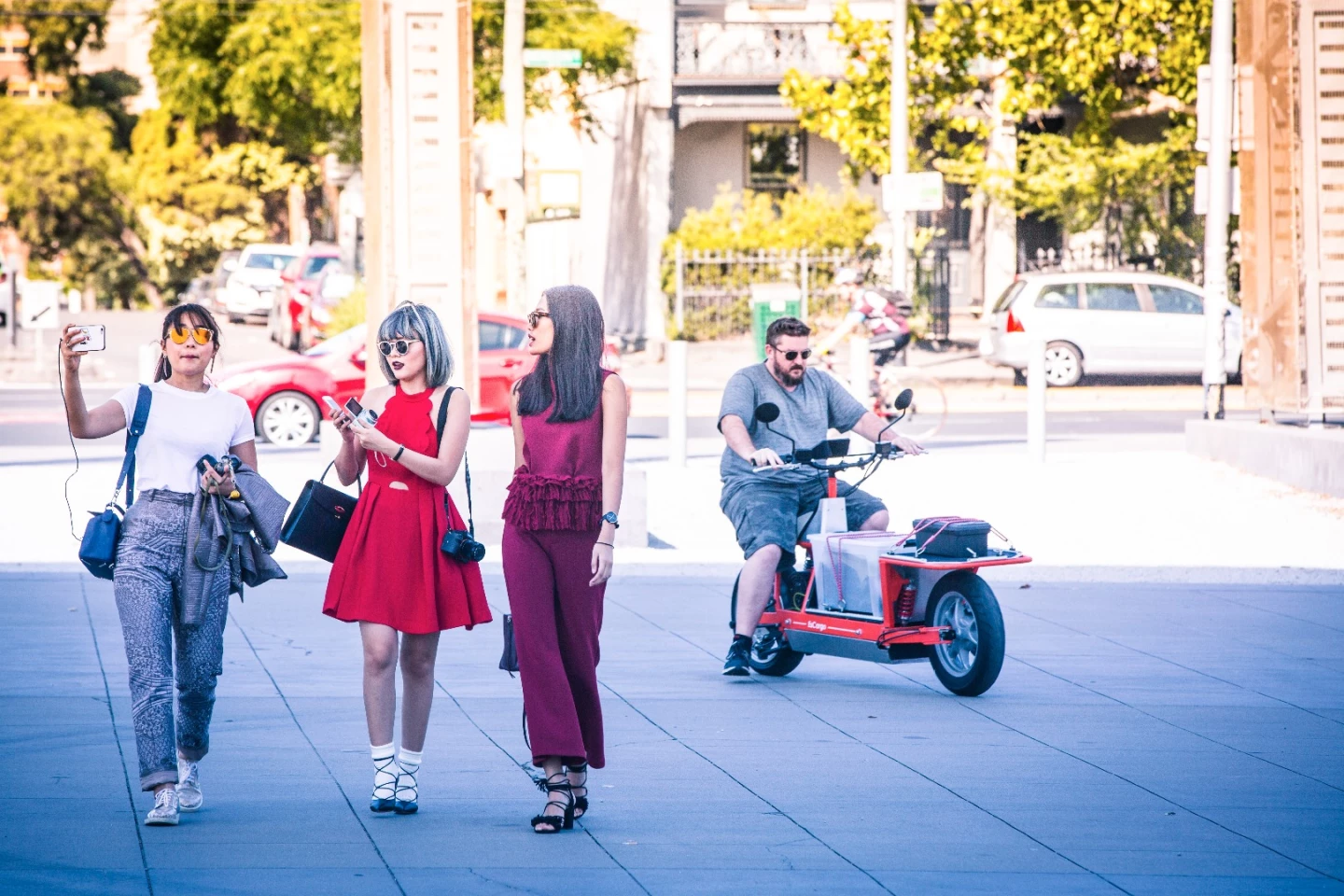
Either way, it's one of the freakiest things I've ever tried to ride. I say "tried," because for the first five minutes on the EsCargo I was paddling around with my feet down, utterly confused. Everything I did with the steering was wrong, the bike seemed to veer off in strange directions and that distant front end didn't want to come back.
Here's why. At the sub-20 km/h (12 mph) speeds I was riding at, the EsCargo doesn't countersteer like a motorcycle. It steers positively, like some sort of leaning quad bike. Eventually I worked out the way to turn it is to lean your body in to prepare for the turn, then haul the front end into the turn by steering positively. Oh, and correct in the opposite direction to what you'd do on a motorcycle. It's a bit like those fairground bikes where the controls are reversed.
With 10 minutes of riding under my belt, I'd started to get the hang of it – and the process itself was a real laugh. Just don't expect to jump on this thing and ride it like a scooter! Sadly, we didn't shoot any video of ourselves wobbling along getting our heads around this thing.
"It's a really unique experience I guess, being so far back, sitting pretty much dead over the rear wheel," says Fehlberg. "Seeing the front wheel so far in front of you, and it feels like it moves before you move. With the cargo bike, I didn't think they'd be able to be as maneuverable as they are. But I did a day of shadowing with a guy who couriers every day on the Bullitt bikes and he was lanesplitting, and weaving between lanes, it was freaking me out a bit how much control he had. But he's been riding it for five years now, so he's really got to grips with it."
But why design the bike like this in the first place, with the seat and steering right at the back? "The load's on the front and in between the axles," Fehlberg tells us. "It's obviously good for your center of gravity and stability to have it between the wheels and as low as possible. The batteries are at the lowest point. All your cargo's in front of you, you can see it, you know that it's all intact, and it helps for stability as well."
There's no doubt that it's a proven platform in the cycling world, so there's every chance it'll be just as successful a platform as an EV.
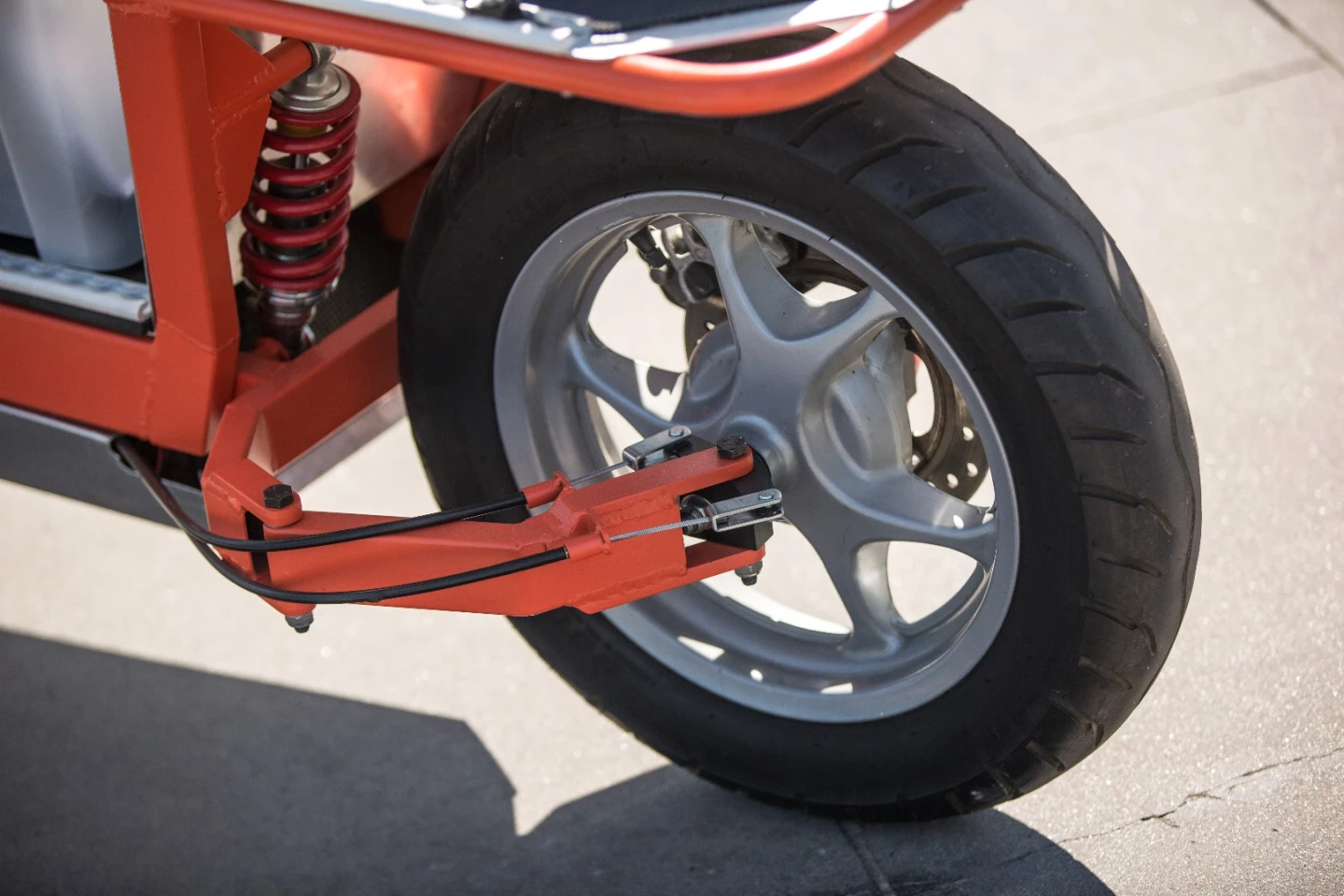
With a small, 1 kWh battery pack in it, this prototype weighs in at a very svelte 95 kg (209 lb). That's not including the bits and pieces you'd need for road registration, like lights, a working dash, indicators, mudguards, chain guards and the rest. The mock-up dash on the prototype suggests a touch screen with navigation capabilities, which would make sense on a delivery machine. Likewise, there's plenty of room in the underslung battery compartment for a lot more battery capacity. And the cargo floor comes off so easily it's not hard to imagine a swappable battery pack to keep the EsCargo on the road while spare batteries charge back at HQ.
Fehlberg is hoping to find development and manufacturing partnerships to help move the EsCargo to the next level.
Personally, I think the thing is so interesting to ride, he should build another three of them, stick some crash bars on, and get some EsCargo races happening at a go-kart track. Sign me up!
More information: EsCargo


